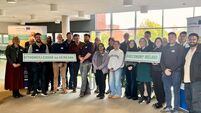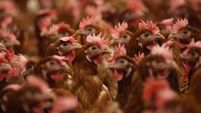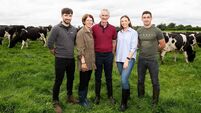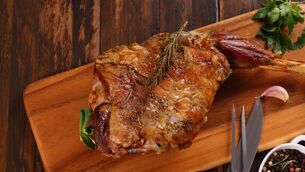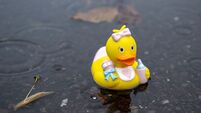How a team from Galway aims to promote Irish Angus beef perceptions
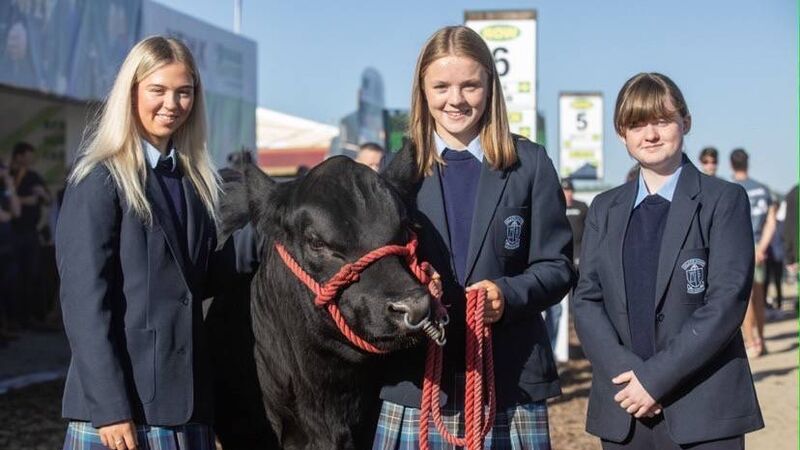
From left: Katie Ann Gacquin, Celine Gacquin and Róisín McCauley, at the National Ploughing Championships.
In our final instalment of profiles of the 2024 Certified Irish Angus School Competition finalists, we meet the team from Coláiste Mhuire.
The all-woman team of Róisín McCauley, Celine Gacquin, and Katie-Ann Gacquin from Coláiste Mhuire, Ballygar, Co Galway, made it to the final standing out in initial interviews by serving Angus burgers to the panel by way of introduction, and later wowing them with their project titled: 'Increasing consumer perceptions of the value of beef'.
All three girls hail from farming backgrounds. Róisín, with knowledge of sucklers back home, Celine, from Roscommon, and Katie-Ann coming from a mixed enterprise of sucklers and sheep from their home farms.
The five Angus calves stayed on Celine’s farm. The girls, understanding the claves would only be with them for 18 months, opted not to name them, fearing they would become too attached. However, one was christened Barbara after she had to receive some special treatment following an illness that cleared up after a vet call-out.
The team’s project revolving around consumer perceptions of beef aimed to understand what consumers were looking for when they buy beef from the shops, explain and educate the environmental benefits associated with reducing food waste, look into minimising food waste with versatile meat products, research future food production, and explore how farmers can farm with the consumer in mind.
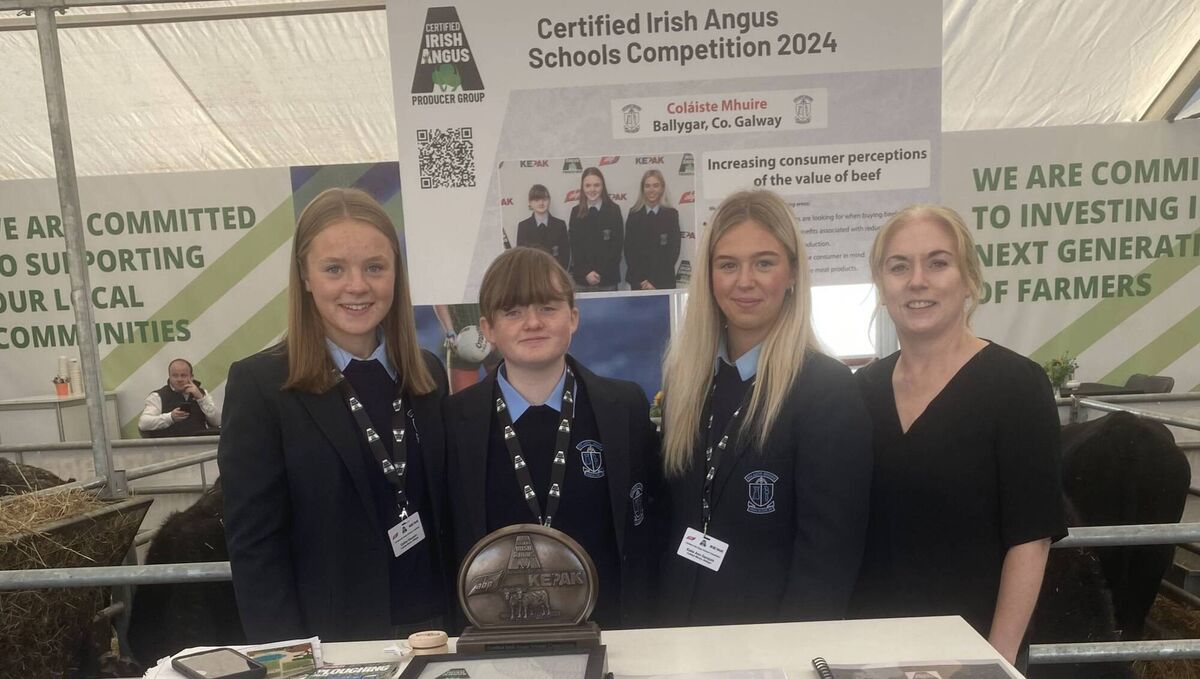
To help raise awareness of the girl’s research, the team held cookery demonstrations in their community to promote and inform people about certified Angus beef, created recipe cards in an effort to minimise food waste, and having a notice board in their school with pictures of the cows, their project and information, and updates of the competition and their project so their peers can follow along for the journey.
To raise money to help feed their calves, the girls held a “Farmer Friday”, where students brought in €2 and wore their wellies to school. There was also a photo competition where students sent in agricultural-themed photos, and the team chose their winners, who received a €25 voucher, all in aid of spreading awareness of the certified Irish Angus brand.
The team also held a quiz night and raffle in a local pub alongside promoting their research, with the prizes being sponsored by local businesses from Roscommon and Ballygar, with Kepak and Waldrons meats sponsoring with six large hampers.
The team also hosted a taste testing survey with a stand at their local Centra. With this, members of the public did blind taste tests of certified Irish Angus beef burgers and steaks compared with Centra’s own burger and steaks. The blind taste testers were then given a questionnaire after trying both brands of products and rated each sample for texture, taste, quality and price.
“The majority of people said that they would notice a difference between the two of them. They said certified Irish Angus was a lot better, but they were saying they were less likely to buy it, because of the price,” explained Celine.
The team plans to head out further afield and host a similar blind tasting survey in a town or more suburban area to compare results and see if sentiments differ the further the team goes away from the countryside.
Talking to the about their final days with their calves before slaughter, Katie-Ann said: “We knew that's what was coming. We'd be used to it anyway, because we were all from farms, so you have to be prepared for that. But it's all done humanely, so that kind of like relieved us in a way. It also helped us finalise our project theme, which would be focused on food waste, because we saw from Kepak that they use every single bit of the animal product — nothing goes to waste.”
As part of their project in an effort to mitigate food waste, the team put together their own anaerobic digester. They constructed it using an IBC tank, and the team are sourcing food waste from local businesses and restaurants for the tank.
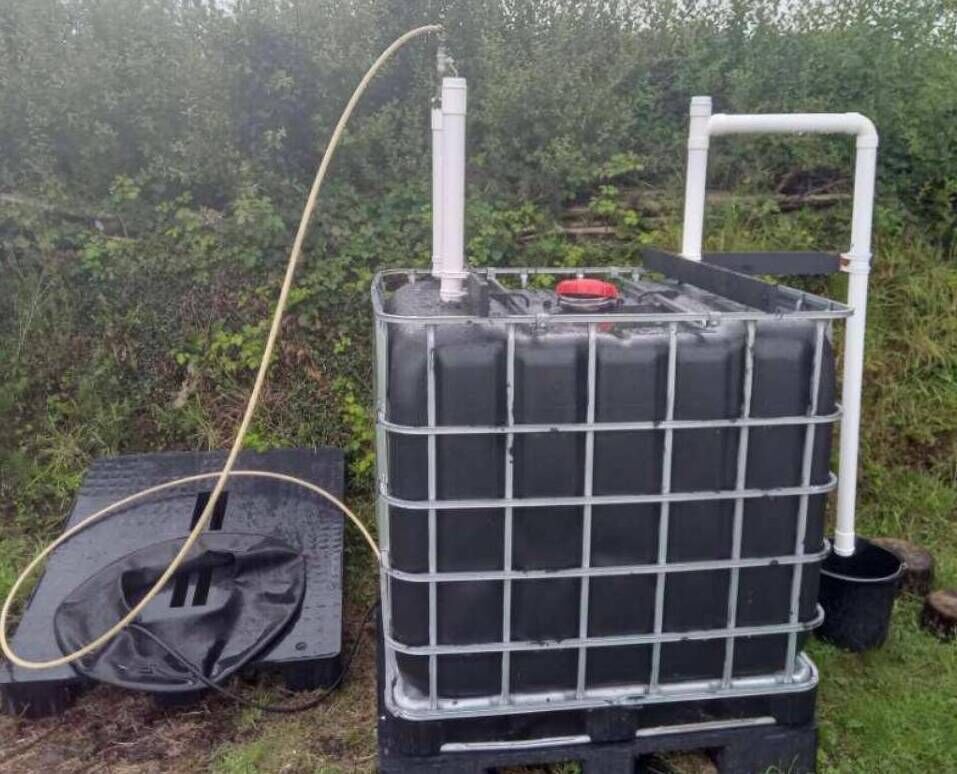
The girls got the idea after spending some time in Airfield estate in Dublin as part of their trip and prize for becoming finalists. There they saw a small anaerobic digester in action, “and that kind of got us thinking, maybe we should give something like that a try”, explained Celine.
After a lot of trial and error, the girls now have a working anaerobic digester collecting the gases emitted in a tyre tube with the hopes of utilising the gas at a later date to help fuel and cook an Irish Angus steak. They’ve painted the tank black to attract heat from the sun and have plans to get their tank an insulation jacket for the winter months so their digester can work year-round.
The team, ever proactive with their ventures, contacted Gas Networks Ireland regarding their digestor and were invited for a tour of the site of one larger-scale anaerobic digester currently under construction for the network.
The team showcased their work in the local area but also ventured far and wide to spread awareness of their work and the competition, engaging with consumers and farmers alike at the Glenamaddy show and Ballyforan fair.
The girls also visited Gibbons' farm and got to talk with farmer Alan Gibbons, a member of the Certified Irish Angus Elite Breed Improvement Programme. The team were also invited by a school in Kilbeggan to showcase their work to the students studying agricultural science, explaining the competition and their research.
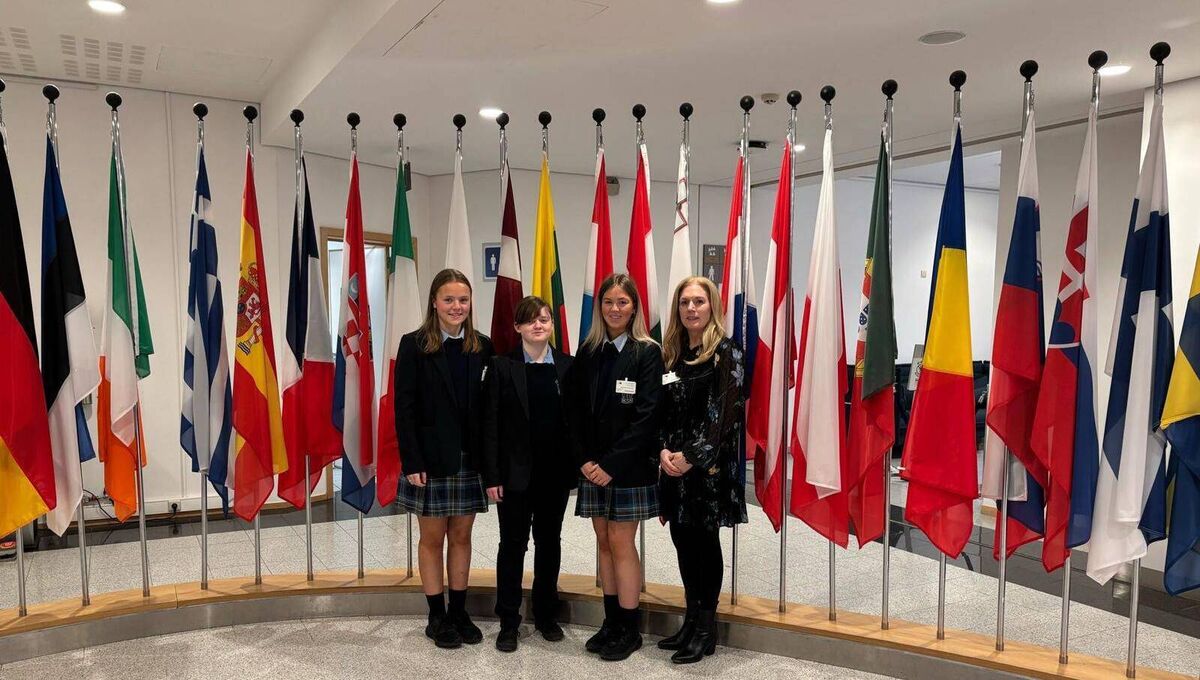
The Brussels trip was a major highlight for the Coláiste Mhuire team, who were delighted to meet the other teams and make friends with similar interests, as well as showcasing their projects to MEPs.
Regarding whether they would recommend the competition to future transition year students, came a resounding “definitely” from the team.
“It really stood out to us the connections and new friends you make through the competition, it's an amazing experience and opportunity,” Katie-Ann explained.
